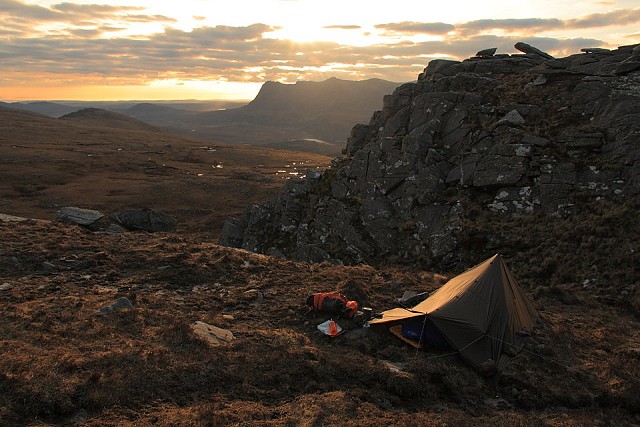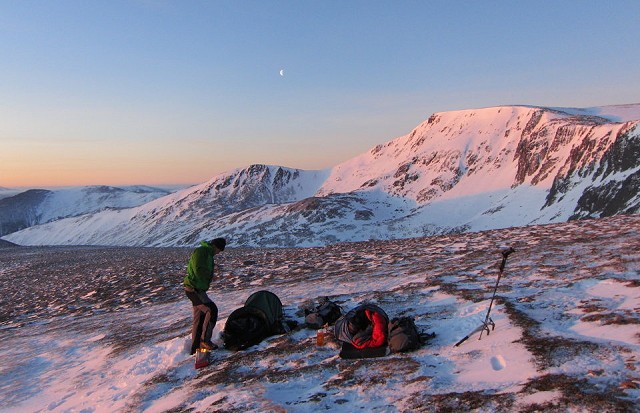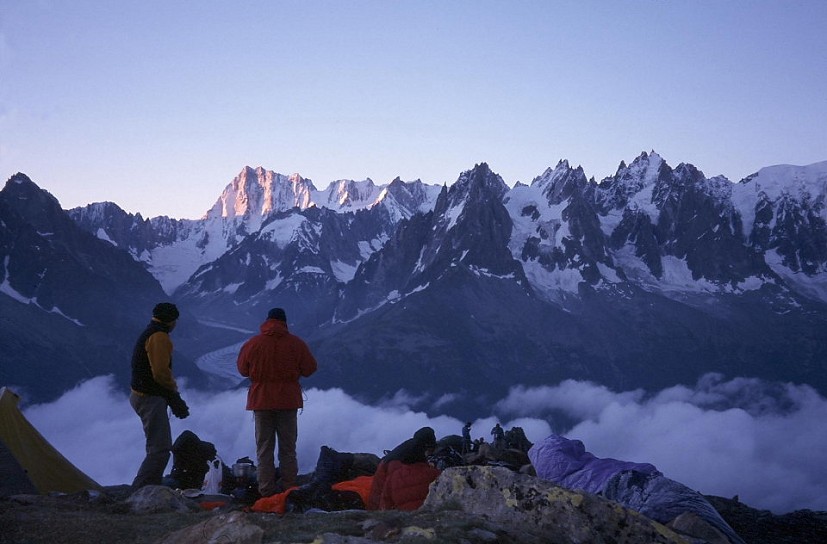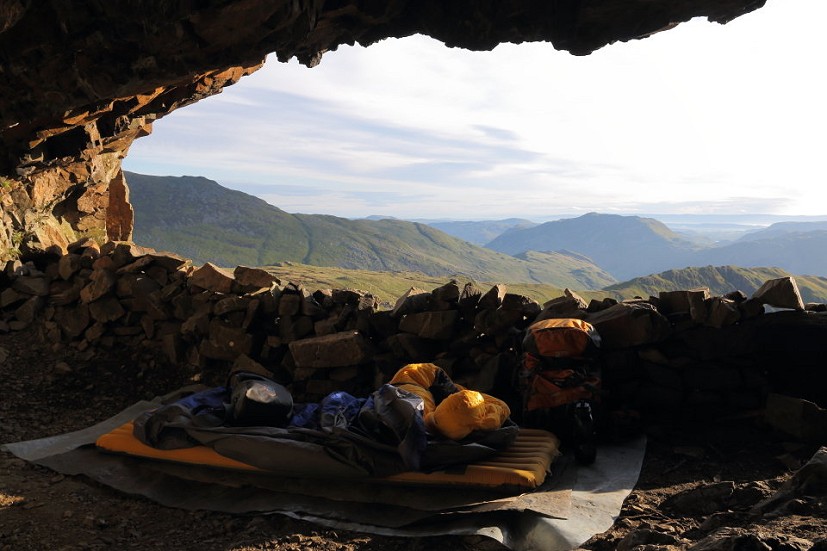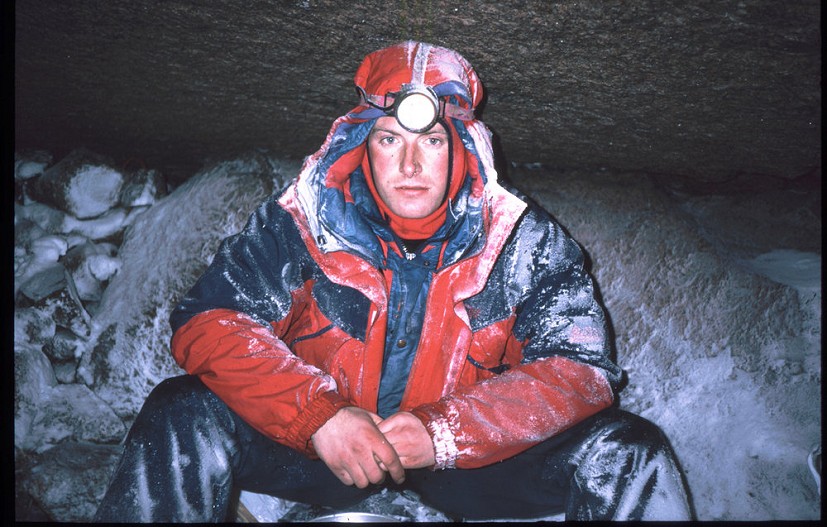Ten Top Tips for a Better Bivvy
With its long days and friendly weather, summer is the ideal time for big hill routes and wild nights up high. Why not ditch the tent and go light? Here are some pointers on how to get the best from your weekend bivvy.
1. Which bivvy bag best meets your needs?
There's more to selecting your ideal bivvy bag than simply picking one in your favourite colour. Any bag worth having will be waterproof and at least nominally breathable, but as with most outdoor gear the choices don't end there. A variety of makes, models, materials, prices, and even different types are available. Are you prepared to sacrifice a bit of durability in order to keep the weight down? Would you prefer a simple drawcord hood or a zipped entry, and if the latter then where would you like the zip to go (around the top seam of the bag or across it at about face level)? Do you go for mummy-shaped to save weight, or rectangular for more leg space and a bit of storage room? Hooped bivvy bags are popular with some lightweight hikers. These are basically miniaturised single skin tunnel tents with zero headroom. While they do offer a little more breathing space than a standard bag, a boon if you're trapped inside by midges or rain, the modern breed of sub-1kg tents have arguably rendered hooped bivvys more or less redundant. We hear a lot about tarps these days too. On a bivvy these can provide a nicely airy shelter, keeping rain off your head without shutting you off from the world as totally as a tent. This is an attractive idea, but only in the right time and place (California's High Sierra in July perhaps?). Closer to home the wind-driven drizzle and maddening midges of a typical British summer evening will quickly expose the weak points of a tarp. Tarps may be fashionable, in a Ray Mearsy sort of way, but that doesn't make them best suited to UK conditions. Much as I hate to sound sceptical, I think if you're planning to lug both a tarp and a bivvy bag up hills all weekend then perhaps you'd be better off leaving both behind and settling for a tent instead?
2. Ponder your plot
Compared with a tent, a bivvy bag has a small footprint, and any little flat-ish space that fits a reclining body could potentially be home for the night, be that a summit, a ledge or a narrow grassy strip between boulders. It's liberating to have so many possibilities to choose from. However even assuming your bivvy bag is windproof a night out in the full force of a gale probably won't be ideal, so you'll need to consider shelter more carefully than you might in a tent. Look for spots in windless hollows, or in the lee of rocks or drystone walls. Pals of mine once walked the Cape Wrath trail, sans tent, over the wettest, stormiest kind of fortnight that the Scottish hills in late winter could muster. To find some respite at night they took to forcing their way into the middle of dense forestry plantations, settling down on carpets of pine needles. Even in a storm a pine wood can be surprisingly calm and dry, apparently. If the weather is an issue it might also be worth seeking out a howff (a slightly improved natural doss, often under a boulder) or even a cave. Some are so well known that they've become part of hillwalking folklore, and get a mention on maps - the Shelterstone by Loch Avon for instance, or the Priest's Hole cave on Dove Crag. The location of others might be a closely guarded secret, which can admittedly make them harder to fit into your plans. By tradition knowledge of these exclusive shelters can only be passed on by someone taking you there in person, so it pays to cultivate well travelled hillwalking pals.
3. Watch the skies, and check the forecast
In the tent versus bivvy bag debate one great advantage to sleeping out under the stars is that you'll be doing just that - sleeping under the stars, with no nylon roof to mediate between you and the natural world. See the sun set from the comfort of your bag; wake in the night to a meteorite display; stick on a brew then roll over to watch dawn light leaking down the hillsides. At its best bivvying is a total immersion in nature. But it can also be pure misery. Add rain or, perish the thought, a midge swarm to the bivvying experience, and you could be forgiven for craving a little less nature and a little more mediation. Faced with a night of condensation zipped tightly into your not-actually-so-breathable bodybag, head and all, the comparative luxury of a tent is infinitely preferable. If there's a strong chance of rain or unbearable numbers of biting beasties then go with a tent. Or stay at home.
4. Cut down your weight, but only within reason
One of the chief benefits of a bivvy bag is that it's lighter than a tent, or it should be, but much of this weight saving can be undone if you're careless about the rest of your packing. Do you really need that 500 page Game of Thrones paperback? What about the second litre of red wine? Carry only what's actually required for basic existence, and strip out the rest. Simplicity is the name of the game with bivvying after all. Bring a sensible minimum of spare/warm clothing, go for lightweight waterproofs if conditions allow, and the lightest sleeping bag you can comfortably get away with. This all hinges on the time of year, or course, and the weather forecast. It'd be easy to get so carried away with the lightweight ethic that you left yourself seriously underequipped, but then finding that balance between sound judgement and misjudgement is part of the game. New kit seems to be getting lighter all the time, so as and when you replace items it's worth bearing the weight of each in mind. Aside from clothes and sleeping stuff consider all the other bits and bobs that find their way into an overnight rucksack. Remove excess food packaging before starting, bring one spare bootlace instead of two, ditch the full cutlery set and just bring a spoon, cut the handle off your toothbrush (if you even need one) - taken together, such fractional weight reductions will add up (or rather, subtract). Wet food is an unnecessary weight, as are tinned items; go for largely dry foodstuffs. Some bivvy minimalists will even forego hot food and brews altogether in order to avoid having to carry a stove, fuel and cooking pot. If you can subsist on cold sandwiches and muesli alone then by all means experiment, though this tactic is probably best suited to shorter trips in summer conditions.
5. What goes beneath?
Mad with the notion of saving every gram, I once insisted on doing without sleeping bags and ground mats for a night bivvied in Snowdon's Cwm Glas. We shivered from dusk til dawn, then abandoned next day's planned climb and retreated to a warm cafe. My friend was not impressed. I'd ruined my image as someone who knew about mountains, and wasted a good climbing day into the bargain. It's not a mistake I've felt the need to repeat. Well not on purpose anyway. Having no sleeping bag is an obvious recipe for a chilly night, but even with the best bag you might be surprised by how much heat a reclining body will lose to the ground. A decent ground mat can make or break a night of roughing it, smoothing over the knobbles and insulating you from the cold below. Mats come in a variety of lengths, thicknesses, shapes and prices, and generally two types: closed cell foam (simple, durable, cheaper) and inflatable (more comfortable, often warmer, pricier). In recent years down-insulated inflatable mats have become increasingly popular, and the outlay is probably worth considering for winter or alpine bivvies.
6. It doesn't have to be a suffer-fest
OK I've said to keep it light and simple, but still you needn't take things to spartan extremes. Why not have a pillow for instance? That doesn't mean carting a cushion along: All you need is a partially inflated sealed drybag, or a stuff sack full of the clothes you just took off. These are things you'll have had with you anyway. In colder weather a spare pair of night time socks easily earn their baggage allowance, since the ones you wore in the day will inevitably be wet. Give yourself a nice little end-of-day reward too - a handful of sweets, a hip flask, or whatever you fancy.
7. Weatherproof your gear before bed
There won't be space inside the bag for your rucksack, footwear and cooking stuff. So what if it pours in the night, or the wind gets up? Wrap everything in a separate waterproof bag - a bin liner will do - and/or weigh it down.
8. Stay well fed
Nights out can be cold, surprise surprise, and there really are no prizes for needless suffering (spot a theme developing here?). Besides, you're out in all weathers, working hard all day, so adequate food intake is a must. Go with a high calorie, high carb, easily cooked dinner. I'm not personally a great fan of ready made dehydrated camp meals. They seem to cost a lot for what you get; their edibility is a gamble; and many would not be enough to fill me up after a hard day anyway (but I am a big eater). I'm too lazy to dehydrate my own camp meals, but for a night or three you can't go far wrong with variations on a theme of: quick cook pasta or couscous, a sachet of sauce, chunks of chorizo, a few pine nuts and a chunk of cheddar. Don't skimp on the desert - something faff free like chocolate if you're saving fuel. Before lights out a hot cup of instant soup or drinking chocolate sets you up for the night.
9. Go when you've gotta
We've all done it. You wake in the night needing a pee; but you're zipped into a bag, inside another bag, and it's cold out there. You roll over and try to ignore the inevitable. It never works for long. But there you lie anyway, for what seems like hours, drifting in and out of semi consciousness, half-dreaming of waterfalls and frittering away valuable sleep. If you'd moved straight away you'd have been happily snoring again in a minute. For god's sake get up and do it. Just watch where you aim if it's windy.
10. Keep it tidy
The mountain environment is a fragile and finite resource, and easily trashed. The usual commonsense rules most definitely apply: leave nothing but footprints; pack out all rubbish - including fruit peel, which takes ages to decompose; go to the toilet far from any water source; bury your poo and burn used toilet paper (you only get greenie points for this if you don't accidentally start a moorland fire in the process). Though for some people no wild camp is complete without the hypnotic crackle and smoky hiss of wet twigs trying to burn, camp fires in the hills are generally frowned upon. Aside from the obvious risk of starting a bigger fire than intended, leaving circles of charred earth everywhere you go is hardly compatible with the leave no trace ethos. Perhaps an exception can be made on beaches below the tide line?


